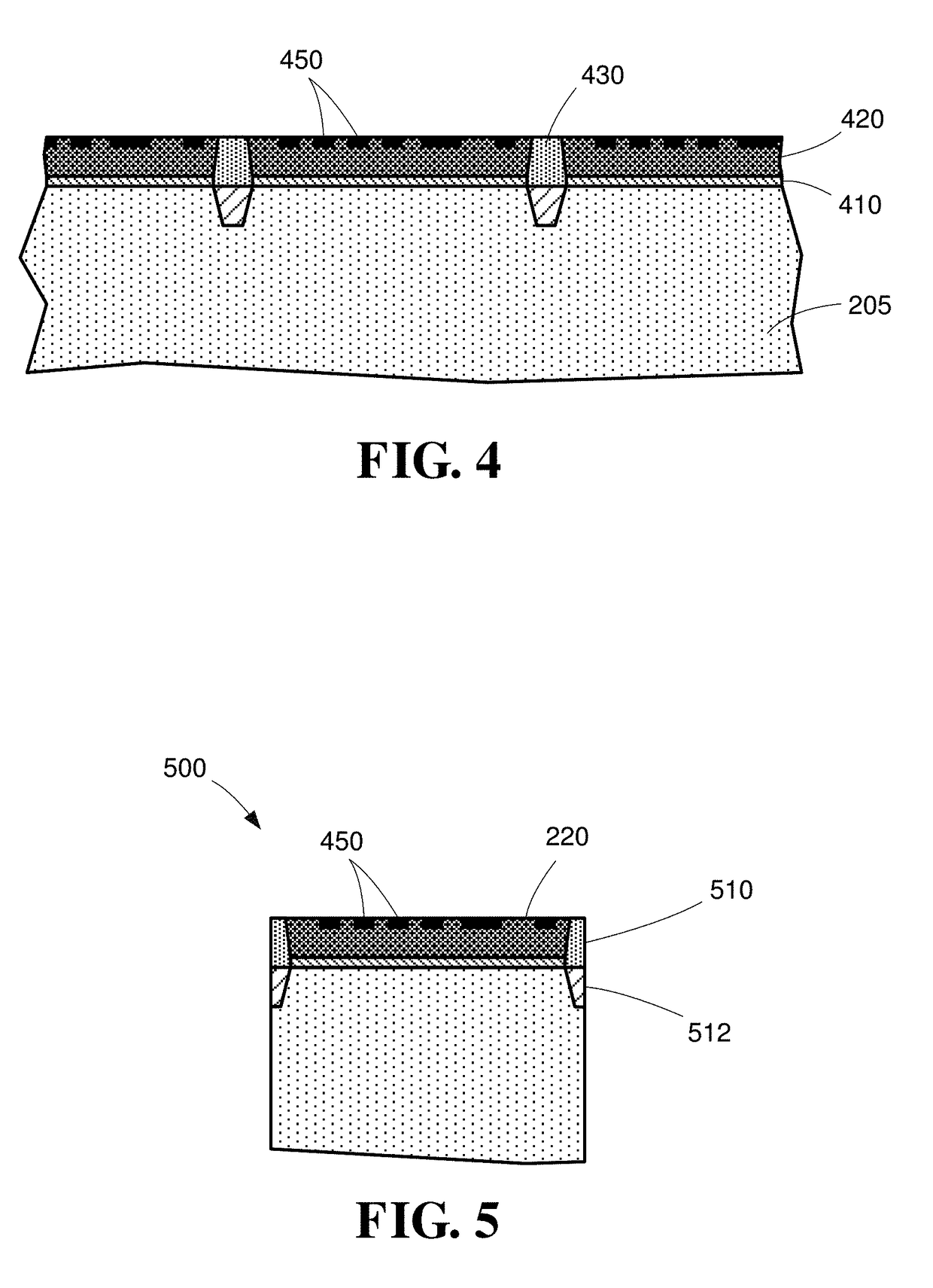Reduction of wafer bow during growth of epitaxial films
- Summary
- Abstract
- Description
- Claims
- Application Information
AI Technical Summary
Benefits of technology
Problems solved by technology
Method used
Image
Examples
Embodiment Construction
[0025]Heteroepitaxy has become a useful process for forming high-performance or specialized semiconductor materials at reduced cost and large wafer sizes compared to forming bulk substrates of a desired semiconductor material. In heteroepitaxy, a desired monocrystalline semiconductor material is grown over a dissimilar crystalline material. The heteroepitaxy layer may be formed using a chemical vapor deposition process, for example, or any other suitable crystal-growth process. Some examples of heteroepitaxial systems include gallium-nitride materials grown on silicon, silicon-carbide, or sapphire substrates. There are many other heteroepitaxy systems, and the technology described herein is not limited to only gallium-nitride materials. Examples of other heteroepitaxy systems include, but are not limited to, any of silicon-carbide, silicon-germanium, gallium-arsenide materials, gallium-phosphide materials, and indium-phosphide materials grown on silicon or other substrate materials....
PUM
 Login to View More
Login to View More Abstract
Description
Claims
Application Information
 Login to View More
Login to View More - R&D
- Intellectual Property
- Life Sciences
- Materials
- Tech Scout
- Unparalleled Data Quality
- Higher Quality Content
- 60% Fewer Hallucinations
Browse by: Latest US Patents, China's latest patents, Technical Efficacy Thesaurus, Application Domain, Technology Topic, Popular Technical Reports.
© 2025 PatSnap. All rights reserved.Legal|Privacy policy|Modern Slavery Act Transparency Statement|Sitemap|About US| Contact US: help@patsnap.com



